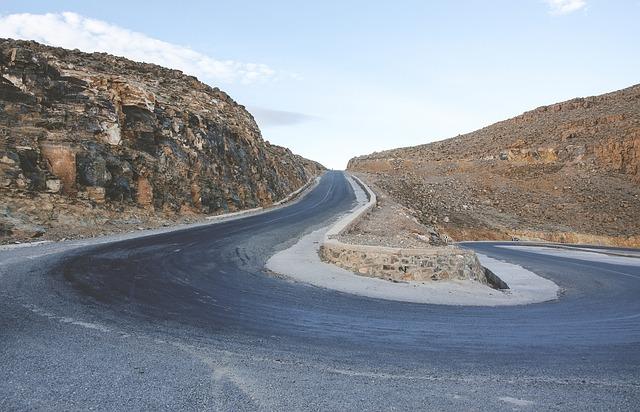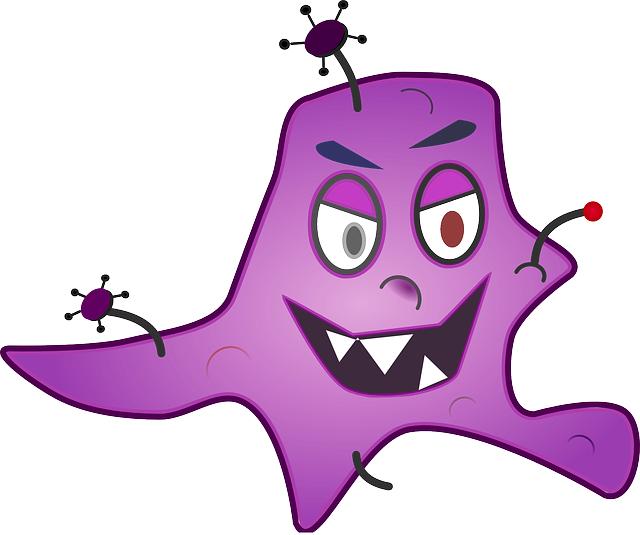Is a Cold Shower as Good as an Ice Bath? Cold Therapy Comparison

Are you ready to plunge into the invigorating world of cold therapy? In this article, we aim to uncover the truth about cold showers versus ice baths and determine which one reigns supreme when it comes to therapeutic benefits. Brace yourself as we delve into the science behind these chilling treatments, exploring their unique effects on the mind and body. Whether you’re curious about maximizing post-workout recovery or simply seeking a refreshing way to supercharge your day, join us as we demystify the world of cold therapy and unlock the secrets to finding your icy oasis.
Contents
- 1. The Science Behind Cold Therapy: Unveiling the Benefits and Mechanisms
- 2. Comparing the Effects of a Cold Shower vs. an Ice Bath on Recovery and Performance
- 3. Temperature and Duration: Finding the Optimal Cold Therapy Regimen for You
- 4. Understanding the Psychological Impact: Exploring the Mental Benefits of Cold Therapy
- 5. Navigating the Risks: Precautions and Considerations for Safe Cold Therapy
- Precautions for Safe Cold Therapy
- 6. Integrating Cold Therapy into Your Fitness Routine: Tips and Best Practices
- Tips and Best Practices for Integrating Cold Therapy into Your Fitness Routine
- 7. Wellness Beyond the Physical: How Cold Therapy Impacts Mental Well-being
- 8. Exploring Alternatives: Cold Showers vs. Cryotherapy Chambers – Which Is Right for You?
- 9. The Role of Cold Therapy in Injury Prevention and Rehabilitation
- 10. Unlocking the Potential: How Cold Therapy Can Boost Your Overall Health and Wellness
1. The Science Behind Cold Therapy: Unveiling the Benefits and Mechanisms
When it comes to cold therapy, there’s more to it than just the refreshing feeling of a cold shower or the numbing sensation of an ice bath. The science behind this therapeutic practice reveals a multitude of benefits and intricate mechanisms that promote overall well-being.
Cold therapy, whether through cold showers or ice baths, triggers a phenomenon known as vasoconstriction. This process constricts blood vessels and reduces blood flow to specific areas of the body, leading to several positive effects. For example, it can help reduce inflammation and swelling by limiting the amount of fluid that accumulates in tissues. Additionally, cold therapy stimulates the release of endorphins and norepinephrine, which are natural pain-relieving and mood-enhancing chemicals.
Moreover, cold therapy also activates the body’s thermogenic response. When exposed to cold temperatures, the body has to work harder to maintain its core temperature, thus increasing metabolism and burning more calories. This can be particularly beneficial for individuals looking to enhance their weight loss efforts or boost their recovery after intense physical activities.
Benefits of Cold Therapy:
- Reduces muscle soreness and speeds up post-workout recovery.
- Enhances mental alertness and overall cognitive function.
- Boosts the immune system and improves circulation.
- Relieves symptoms of certain skin conditions, such as eczema and psoriasis.
- Alleviates symptoms of depression and promotes a sense of well-being.
So, is a cold shower as good as an ice bath? While both provide various benefits, the intensity and duration of exposure to cold temperatures differ. An ice bath offers a more intense experience, targeting specific areas and providing a broader range of benefits. On the other hand, a cold shower can be a more accessible and less time-consuming option, still offering noticeable advantages for your physical and mental health. Ultimately, the choice between the two depends on your preferences, needs, and goals.
| Comparison | Cold Shower | Ice Bath |
|---|---|---|
| Temperature | Around 20-25°C | 4-10°C |
| Duration | 5-10 minutes | 10-20 minutes |
| Focused Area | Whole body | Specific body parts |
| Accessibility | Readily available at home | Requires access to ice or ice-filled tub |
2. Comparing the Effects of a Cold Shower vs. an Ice Bath on Recovery and Performance
When it comes to post-workout recovery and enhancing performance, cold therapy is a popular method that athletes and fitness enthusiasts incorporate into their routines. While both cold showers and ice baths offer similar benefits, there are a few key differences that can affect their effectiveness.
One major difference between cold showers and ice baths is the temperature. Cold showers typically range from 50-60 degrees Fahrenheit, while ice baths can be as low as 32 degrees Fahrenheit or even colder. The lower temperature of ice baths allows for a more intense cooling effect, which can help reduce inflammation and muscle soreness more effectively.
Another difference lies in the duration of exposure. Cold showers are usually taken for a few minutes, whereas ice baths are typically recommended for 10-15 minutes. The longer exposure time in ice baths allows for a deeper and more prolonged cooling effect, allowing muscles to recover more efficiently.
Additionally, the immersion in an ice bath provides a full-body cooling experience, whereas a cold shower targets specific areas of the body. This full-body immersion can help reduce systemic inflammation, improve circulation, and speed up the recovery process.
In summary, while both cold showers and ice baths offer benefits for recovery and performance, ice baths tend to provide a more intense and comprehensive cooling effect due to their lower temperature and longer exposure time. However, it’s important to consider individual preferences and comfort levels when incorporating cold therapy into your routine. Whether you opt for a cold shower or an ice bath, both can be beneficial in promoting faster recovery and enhancing performance.
3. Temperature and Duration: Finding the Optimal Cold Therapy Regimen for You
Are you considering incorporating cold therapy into your wellness routine but unsure about the best method to use? In this article, we will compare the benefits of a cold shower and an ice bath to help you determine which approach is right for you.
The Temperature Factor
Both cold showers and ice baths provide numerous benefits for the body, but it’s important to understand the differences in temperature and how they affect your cold therapy experience. Cold showers typically range between 50°F and 68°F (10°C and 20°C), while ice baths are significantly colder at around 40°F (4°C).
Benefits of Cold Showers:
- Increased alertness and energy levels
- Improved circulation and lymphatic drainage
- Alleviation of muscle soreness and inflammation
- Boosted immune system
Benefits of Ice Baths:
- Rapid muscle recovery and reduced inflammation
- Increased metabolism and fat burning
- Enhanced mental clarity and focus
- Regulation of body temperature
Depending on your goals and comfort level with colder temperatures, you can experiment with both methods and see which one suits you best.
The Duration Factor
Aside from temperature, the duration of your cold therapy sessions also plays a crucial role in maximizing its benefits. For cold showers, a recommended duration is around 2-5 minutes, focusing on different parts of the body like the back, chest, and extremities. On the other hand, ice baths are typically kept shorter, lasting around 10-15 minutes due to the extreme cold temperature.
It’s important to listen to your body and gradually increase the duration over time. Start with shorter sessions and gradually work your way up to longer durations to avoid any discomfort or potential risks.
Summary:
| Method | Temperature | Benefits | Duration |
|---|---|---|---|
| Cold Shower | 50°F to 68°F (10°C to 20°C) | Increased alertness, improved circulation, muscle soreness relief, boosted immune system | 2-5 minutes |
| Ice Bath | Around 40°F (4°C) | Rapid muscle recovery, increased metabolism, enhanced mental clarity, body temperature regulation | 10-15 minutes |
In conclusion, whether you choose a cold shower or an ice bath, both methods have their own unique benefits. Consider experimenting with both to find the optimal cold therapy regimen that suits your individual needs and preferences. Remember to start with shorter durations and gradually increase as you become more comfortable. Stay consistent with your cold therapy routine and reap the amazing benefits it has to offer.
4. Understanding the Psychological Impact: Exploring the Mental Benefits of Cold Therapy
One of the most intriguing aspects of cold therapy is its profound impact on mental well-being. Cold showers and ice baths have been found to offer various mental benefits that can enhance your overall psychological state. Here, we delve into the psychological effects of cold therapy to understand its potential benefits.
1. Increased Alertness and Mental Clarity
Cold showers and ice baths have been shown to jolt your body into a heightened state of alertness, making you feel more awake and focused. The sudden exposure to cold temperatures stimulates the release of noradrenaline, a neurotransmitter that boosts mental clarity and sharpness.
2. Mood Enhancement and Stress Reduction
Cold therapy has proven to be an effective mood enhancer, as it can increase the production of endorphins, also known as “feel-good hormones.” These neurotransmitters help alleviate feelings of stress, anxiety, and depression, providing a natural and drug-free way to improve your mental state.
3. Enhanced Resilience and Mental Toughness
Regular exposure to cold water can help build mental resilience and toughness. Cold therapy forces you to step out of your comfort zone and endure discomfort, challenging your mind to overcome stress and develop a stronger mindset. This mental fortitude can extend beyond the cold shower or ice bath, helping you approach various challenges in life with greater resilience.
Precautions for Safe Cold Therapy
When practicing cold therapy, there are a few precautions and considerations to keep in mind to ensure your safety and maximize the benefits of this therapeutic technique.
1. Gradual Exposure
Whether you choose a cold shower or an ice bath, it is important to gradually expose your body to the cold temperatures. Start with shorter durations and lower intensity, allowing your body to acclimate over time. This will reduce the risk of cold-related injuries such as frostbite or hypothermia.
2. Be Mindful of Existing Medical Conditions
If you have any pre-existing medical conditions, it is crucial to consult with a healthcare professional before engaging in cold therapy. Conditions such as Raynaud’s disease, asthma, or circulatory disorders may require special precautions or avoidance of extreme cold temperatures.
3. Hydration and Warm-Up
Prior to cold therapy, ensure your body is well-hydrated. Cold exposure can increase fluid loss through increased urine production, so it is important to drink fluids before and after the therapy. Additionally, incorporate a brief warm-up session to increase your body’s core temperature and prepare your muscles for cold exposure.
4. Don’t Overdo It
While cold therapy can provide numerous benefits, it is essential to listen to your body and avoid excessive or prolonged exposure to cold temperatures. If you experience any adverse reactions or discomfort, it’s recommended to stop the therapy and consult with a healthcare professional.
5. Post-Therapy Care
After cold therapy, take care of your body by gradually rewarming. Wear warm clothing, drink warm fluids, and engage in gentle movements to prevent a rapid drop in body temperature. Also, make sure to properly dry your skin to avoid prolonged exposure to moisture, which can increase the risk of skin issues.
6. Integrating Cold Therapy into Your Fitness Routine: Tips and Best Practices
Tips and Best Practices for Integrating Cold Therapy into Your Fitness Routine
Integrating cold therapy into your fitness routine can bring numerous benefits to your overall performance and recovery. Whether you choose to take a cold shower or indulge in an ice bath, both methods can be effective in their own ways. Here are some tips and best practices to consider when incorporating cold therapy into your fitness routine:
- Gradually introduce cold therapy: If you’re new to cold therapy, start with shorter exposure times and gradually increase the duration and intensity. This allows your body to adjust and prevents any potential shock to your system.
- Timing is key: Consider incorporating cold therapy after an intense workout session or as a post-workout recovery routine. Cold therapy has been shown to reduce inflammation and muscle soreness, promoting faster recovery.
- Alternate between hot and cold: For a well-rounded approach, try alternating between hot and cold therapies. Contrast therapy, also known as hot-cold therapy, can enhance blood circulation and aid in flushing out metabolic waste products from your muscles.
- Stay hydrated: It’s essential to hydrate before and after cold therapy sessions. Cold exposure can cause vasoconstriction and increase blood pressure, making hydration crucial for maintaining optimal performance and preventing any potential discomfort.
- Listen to your body: Everyone’s tolerance to cold therapy differs, so it’s important to listen to your body. If you experience any extreme discomfort or prolonged shivering, it’s best to discontinue the session and consult with a healthcare professional.
Remember, cold therapy is just one tool in your fitness arsenal. It can be beneficial when used correctly and in conjunction with other recovery methods such as proper nutrition, adequate rest, and regular exercise. Experiment with different techniques and find what works best for your body and fitness goals.
7. Wellness Beyond the Physical: How Cold Therapy Impacts Mental Well-being
In recent years, the popularity of cold therapy has surged as people discover its numerous physical benefits. But did you know that the benefits of cold therapy extend beyond the physical realm? Cold therapy has a profound impact on mental well-being as well. Whether it’s through a cold shower or an ice bath, exposing your body to cold temperatures can have a significant positive effect on your mental health.
One of the key ways cold therapy affects mental well-being is by reducing stress and anxiety. When you expose your body to cold temperatures, it triggers a physiological response that releases endorphins, also known as “feel-good” hormones. These endorphins help alleviate feelings of stress and anxiety, leaving you feeling calmer and more relaxed.
Furthermore, cold therapy can also improve your mood and boost your overall mental clarity. The rush of cold water or the immersion in an ice bath stimulates blood flow and increases oxygen delivery to the brain. This enhanced circulation can improve cognitive function, increase focus, and sharpen mental acuity. Additionally, the shock to your system from cold therapy can provide a natural adrenaline rush, leaving you feeling energized and invigorated.
8. Exploring Alternatives: Cold Showers vs. Cryotherapy Chambers – Which Is Right for You?
When it comes to cold therapy, there are various options to choose from – cold showers and cryotherapy chambers being two popular choices. While both methods involve exposure to cold temperatures, they have distinct differences and benefits. Here’s a breakdown of each option:
1. Cold Showers:
– Accessibility: Cold showers are easily accessible to most people, requiring only a showerhead with cold water.
– Affordability: Taking cold showers is a cost-effective option since it doesn’t require any additional equipment.
– Convenience: Incorporating cold showers into your daily routine is relatively easy, making it a convenient choice for regular use.
– Health benefits: Cold showers can improve circulation, boost mood, rejuvenate the skin, enhance immune function, and aid in muscle recovery.
2. Cryotherapy Chambers:
- Controlled environment: Cryotherapy chambers provide a controlled and intense cold therapy experience, usually with liquid nitrogen or refrigerated air.
– Lower temperature: Cryotherapy chambers can reach temperatures as low as -160°C (-256°F), whereas cold showers typically range from 10-20°C (50-68°F).
– Speed and intensity: Cryotherapy sessions usually last for a few minutes, whereas a cold shower can be as short or as long as you prefer.
– Potential benefits: Cryotherapy chambers are believed to reduce inflammation, alleviate pain, enhance athletic performance, improve sleep, and promote overall well-being.
In summary, both cold showers and cryotherapy chambers offer unique advantages in terms of accessibility, affordability, convenience, and health benefits. Choosing the right method depends on personal preferences, availability, and desired therapeutic effects. Whether you opt for the simplicity of a cold shower or the controlled environment of a cryotherapy chamber, embracing the benefits of cold therapy can be a refreshing and revitalizing addition to your wellness routine.
9. The Role of Cold Therapy in Injury Prevention and Rehabilitation
Cold therapy, such as using ice baths or taking cold showers, has long been used in injury prevention and rehabilitation. But which one is more effective? Let’s compare the benefits and drawbacks of each method.
1. Ice Baths:
– Benefits:
– Reduced inflammation: Immersing your body in cold water can help reduce inflammation, which is key in injury recovery.
- Faster muscle recovery: Ice baths constrict blood vessels, which helps flush out waste products in the muscles and speeds up recovery.
– Pain relief: The numbing effect of the cold water can provide temporary relief from pain.
– Drawbacks:
– Potentially uncomfortable: Sitting in a tub of cold water for an extended period can be uncomfortable for some individuals.
- Time-consuming: Preparing and filling an ice bath can take time, making it less convenient for daily use.
- Accessibility: Ice baths may not be easily accessible for everyone, especially when traveling.
2. Cold Showers:
– Benefits:
– Convenience: Cold showers are more accessible and can be easily incorporated into your daily routine.
– Mental benefits: Cold showers have been shown to improve mood and increase alertness, promoting overall well-being.
– Muscular benefits: Cold showers can help reduce muscle soreness and aid in muscle recovery.
– Drawbacks:
– Limited exposure: Compared to ice baths, the exposure to cold water in cold showers is not as prolonged, potentially impacting the depth of the therapeutic effect.
– Gradual adjustment: Some individuals may find it challenging to adjust to the shock of cold water, requiring a gradual acclimation process.
In conclusion, both ice baths and cold showers have their own benefits and drawbacks when it comes to cold therapy in injury prevention and rehabilitation. While ice baths offer a more intense and targeted treatment, cold showers provide convenience and overall well-being benefits. Ultimately, the choice between the two methods depends on personal preferences, accessibility, and specific injury or rehabilitation needs.
10. Unlocking the Potential: How Cold Therapy Can Boost Your Overall Health and Wellness
Cold therapy, also known as cryotherapy, has gained popularity in recent years for its potential to improve overall health and wellness. From professional athletes to everyday individuals looking to optimize their well-being, many are turning to cold therapy as a way to boost their physical and mental performance. But what exactly is cold therapy, and how does it work? Moreover, is a cold shower as effective as an ice bath?
Cold therapy involves exposing the body to cold temperatures for a specific period of time in order to trigger a range of physiological responses. One of the most common and accessible forms of cold therapy is taking a cold shower. This involves immersing yourself in cold water for a predetermined amount of time, usually a few minutes. On the other hand, an ice bath requires submerging the body in freezing cold water for a more prolonged period, typically around 10-15 minutes.
While both cold showers and ice baths can provide a range of benefits, there are distinct differences between the two. The main differentiating factor is the intensity and duration of the cold exposure. A cold shower offers a milder form of cold therapy, making it a suitable option for beginners or those who may find an ice bath too intense. On the other hand, an ice bath provides a deeper and more prolonged exposure to cold temperatures, inducing a stronger physiological response.
| Cold Shower | Ice Bath |
|---|---|
| Shorter duration | Longer duration |
| Milder cold exposure | Intense cold exposure |
| Easier to incorporate into daily routine | Requires planning and preparation |
Whether you choose to incorporate cold showers or ice baths into your routine, both methods can have a positive impact on your overall health and wellness. Cold therapy has been shown to boost circulation, reduce inflammation, promote muscle recovery, enhance mood, and improve sleep quality. It can also strengthen the immune system and increase the production of brown fat, which plays a role in maintaining a healthy body weight.
In conclusion, cold therapy can be a powerful tool for unlocking your full potential and enhancing your well-being. Whether you opt for a cold shower or an ice bath, regular cold exposure can provide a range of benefits for your physical and mental health. So go ahead, embrace the cold, and let cold therapy take your health and wellness to new heights!
In conclusion, when it comes to the ultimate cold therapy experience, the battle between a refreshing cold shower and a bone-chilling ice bath continues. While both methods offer a myriad of health benefits, it ultimately boils down to personal preference and individual goals. Whether you crave a quick energy boost and a gentle start to your day or are seeking to push your limits and maximize recovery, both cold showers and ice baths can be effective tools in your wellness arsenal.
However, keep in mind that it’s important to listen to your body and respect its limitations. Start slowly and gradually increase the intensity of your cold therapy sessions. Remember, the benefits of cold therapy can only be experienced if they’re done safely and sensibly. So, whether you’re a fan of a stunningly cold shower or a true aficionado of bone-chilling ice baths, embrace the cold and savor the invigorating journey towards optimal health.
















